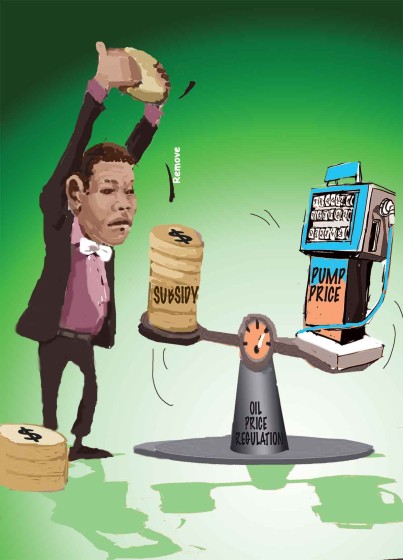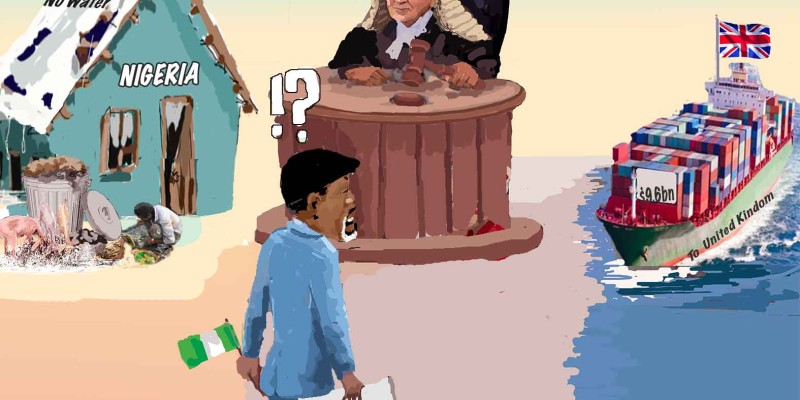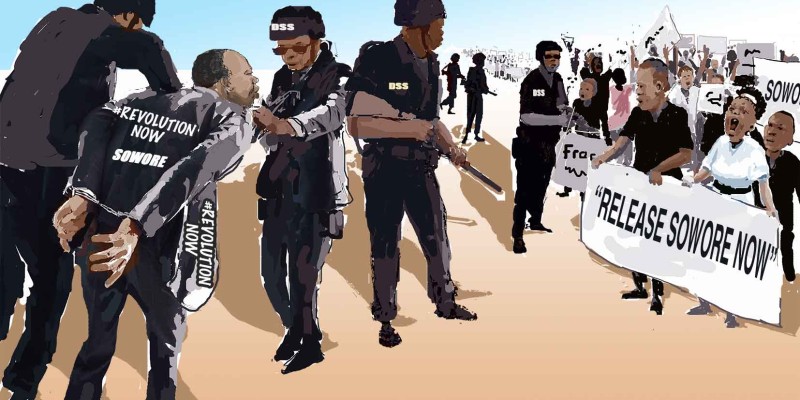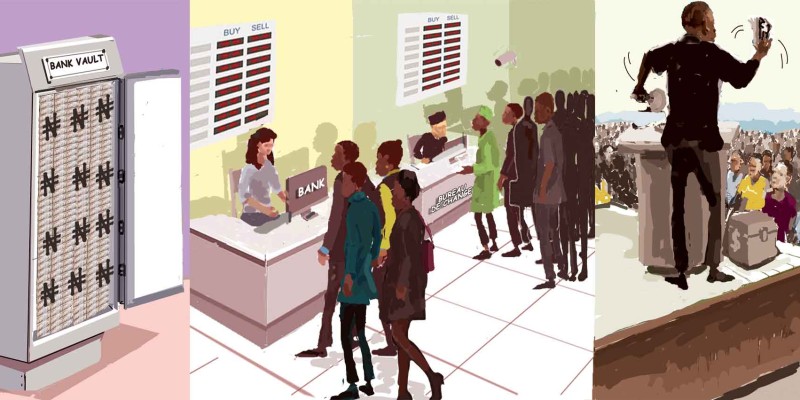EMEFIELE AND THE INHERITED ‘CURSE’ OF SURPLUS NAIRA
By: Sir Henry Olujimi Boyo (Les Leba) republished in December 2014
INTRO:
Last week, this column republished ‘Emefiele’s Crocodile Tears Over N300bn Surplus.’ The article discussed the malpractice of the banking system and the resulting effect on Nigerians. All republications can be found in the archives using the below link.
(See www.betternaijanow.com for this series and more articles by the Late Sir Henry Boyo)
This week’s republication was written by the Late Sir Henry in interview style format to provide a clear understanding of some of Nigeria’s long-standing issues. It discusses the exchange rate, inflation, fuel prices, and CBN’s role in the downward spiral.
As you read through the below article taking note of previous events and rates, keep in mind its first republication (2014), a clear indication that Nigeria’s economic situationis yet to improve.
There has been a palpable feeling of economic uncertainty, since the Central Bank officially devalued the Naira exchange in December 2014; the public’s anxiety is probably, the recognition of the pervasive impact of the Naira/Dollar exchange rate on the general cost of goods and motor-spirits (aka petrol) in a heavily import dependent economy.
*Insert* Fast forward to current realities in 2023, there seems to be a ‘dejavu’ sense of feeling one may say, as similar occurrences after the suspension of the CBN governor and the official announcement of the devaluation of the Naira, brought about the same trend and effect that harshly affects the economy. Note in this case, the Naira valuation is now dependent on I/E window of trade ironically.
Hereafter, we will briefly discuss the most frequently asked questions in relation to the recent Naira devaluation.
Question: What is the immediate implication of Naira devaluation?
Answer: Up until last week, the Central Bank sold one dollar for about N155; henceforth, however, the CBN would officially sell one US dollar at an average ‘subsidized’ price of N168, specifically for approved ‘critical’ imports while banks would, henceforth independently source and sell their own dollars at a market determined rate, (currently around N175=$1) for those goods which are less favoured. Thus, further dollar scarcity of the interbank market could well push exchange rates nearer N200/$1; indeed, Bureau de Change already sell their dollars well above N180=$1. The net impact of weaker Naira exchange rates would be the sustenance of an inflationary spiral. For example, the recent 8 percent Naira devaluation may ultimately drive the already oppressive level of inflation above 10 percent, such that all incomes, including the N18,000 minimum wage would lose over 50 percent of purchasing power every 5 years to and further deepen poverty and constrain consumer demand with adverse consequences for industrial and inclusive economic growth. Indeed, with last week’s devaluation, almost 10 percent has been wiped off our celebrated GDP of $510bn.
Question: Apart from inflation, what are the other challenges posed by Naira devaluation?
Answer: The collapse of a once bourgeoning industrial landscape in Nigeria between 1986-93 was the result of a massive Naira devaluation in conformity with the IMF inspired Structural Adjustment Programme (SAP). The cost of industrial inputs quadrupled and made-in-Nigeria products quickly became uncompetitive against cheaper imports; ultimately, government’s progressively successful import substitution strategy met an untimely end. Consequently, job opportunities became increasingly scarce and over twenty years thereafter, our industrial subsector is yet to recover from the dastardly blows suffered as a result of Naira devaluation; indeed, our landscape is littered with hundreds of formerly active factories which have since been converted to places of worship or social event centres. The latest Naira devaluation will inevitably also constrain production activities and further compound our already high rate of unemployment to deepen the obvious threat to social security.
Similarly, with steady Naira devaluation over the years, durable, lifestyle enhancing consumer imports also became quickly priced out of the reach of the average working class family, while the middle class was almost decimated; for example, brand new tear-rubber automobiles which cost less than N5,000 on average when N1 exchanged for more than $1 were soon replaced by well used Belgium and Tokumbo cars, (instructively, the Mercedes 200 flat back was introduced to the Nigerian market for less than N7,000 in 1976! Today, a Mercedes-Benz car tyre costs well above the minimum wage of N18,000).
Furthermore, Naira devaluation precipitated the unwholesome brain drain of very solid and well-rounded professionals from our ivory towers, educational institutions and the private sector to greener pastures abroad; regrettably, the trend continues to this day while Nigerians, ironically, presently spend over a billion dollars annually, despite of our relatively scarce and abiding budget deficits, to train our children and wards in foreign institutions; worse still, after qualification these youths are encouraged to support the economies of their host countries with their acquired expertise rather than return home to contribute their quota to improvement and growth of our own economy.
Question: What will be the impact of devaluation on fuel prices and subsidy?
Answer: The Economic Management Team has, for over a decade remained in denial of Naira exchange rate as the real driver of higher fuel prices and the collateral of obnoxious fuel subsidy payments exceeding N1tn ($6bn) every year. Indeed, subsidy became a component of domestic fuel price because of precipitate devaluations of the NAIRA between 1986-93 in compliance with IMF conditionalities attached to the SAP.
For example, an exchange rate of N80=$1 will immediately crash fuel prices below N90 without subsidy; however, any exchange rate above the erstwhile N155/$1 will conversely increase fuel prices accordingly. It is not yet clear if fuel imports will be settled with CBN’s new subsidized official median rate of N168 or the current interbank exchange rate of N175/$1; what is clear however, is that instead of lower crude oil prices bringing down domestic fuel prices, the weaker Naira exchange rate of between N168-N175 conversely compensates for the fall in crude prices to keep domestic fuel prices at premium levels which accommodate increasing subsidy values as the Naira rate depreciates.
Question: Is Naira devaluation the product of tumbling oil prices?
Answer: That is what the authorities want us to believe, however, in reality, there is no evidence that the Naira exchange rate responded positively and became stronger when crude prices exceeded $120/barrel a while back. Indeed, historically the Naira exchange rate has consistently fallen over time, despite much higher crude prices and bountiful dollar reserves from oil export.
Question: What then is the prime driver of Naira exchange rate?
Answer: Evidently, the Naira exchange rate is primarily a function of surplus Naira supply a.k.a. excess liquidity; the CBN Governor, the Economic Management Team and the Monetary Policy Committee cannot deny that the eternally present surplus Naira values also have a diluting effect on the strength of the Naira against the dollar; indeed, a market which constantly has a huge overhang of Naira pitched against the Apex Bank’s tightly rationed dollar supplies, will inevitably produce a weaker Naira exchange rate. Thus, the CBN inadvertently weakens the Naira exchange rate, as it liberally floods the money market with hundreds of billions of Naira whenever it substitutes monthly Naira allocations for distributable dollar derived revenue.
Question: Why have CBN’s measures to contain excess liquidity so far failed?
Answer: Actually, CBN’s strategies have been misguidedly targeted at the symptoms, rather than the actual cause of excess liquidity. The abiding symptoms of excess liquidity are untamed inflation, disturbingly and inappropriately high cost of funds to the real sector, weak exchange rate, high national debt accumulation at oppressive costs and the rather unusual, inordinate outlay of between $6-12bn for subsidising fuel prices annually, despite our huge deficits and severe infrastructural depreciations.
Nonetheless, the incontestable cause of excess liquidity is the CBN’s substitution of Naira allocations for dollar revenue; this singular act is undoubtedly also responsible for driving higher inflation rates and higher oppressive cost of funds; thus, such ‘eternally’ surplus Naira supply is consequently also responsible for increasing national debt and service charges as well as a weaker Naira which in turn instigates higher fuel prices and the attendant crushing burden of fuel subsidy.
Fortunately, however, the ‘curse’ of excess liquidity will be exorcized if dollar certificates are adopted for the payments of dollar denominated revenue.
Save the Naira, Save Nigerians!!







